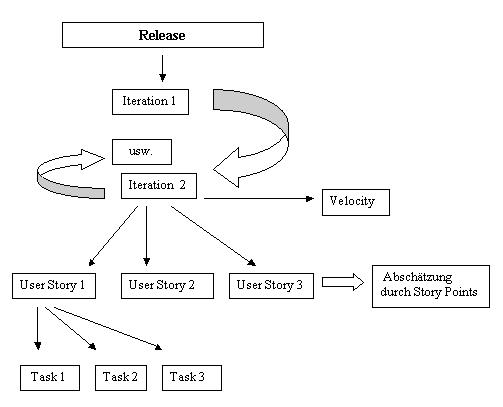The Phases and Rules of Extreme Programming - A Comprehensive Guide
Extreme Programming (XP) is an agile software development methodology that emphasizes customer satisfaction, continuous feedback, and iterative progress. XP is particularly suited for projects with changing requirements and helps teams efficiently navigate the uncertainty that accompanies software development. In this blog post, we delve into the core phases and rules of XP, providing a detailed understanding of how this methodology can be implemented effectively in modern development environments.
Key Variables in Extreme Programming Projects
Before exploring the phases, it is important to understand the four primary variables that influence any XP project: Costs, Time, Quality, and Scope. In XP, only three of these variables can be set by stakeholders—such as clients and project managers—leaving the fourth to be determined by the development team. This flexible approach allows for better adjustment to unforeseen challenges and encourages team autonomy.
For example, if the client sets the scope and quality, and the project manager defines the budget, then the team has the freedom to determine the project’s duration. This interplay between variables ensures the project remains adaptable and responsive to changes.
XP Variables in Project Management
The Life Cycle of Extreme Programming Projects
The life cycle of a project using XP is composed of four main phases:
2.1 Exploration Phase
The Exploration Phase is the initial step of the XP methodology. It involves gathering an understanding of the project’s scope, guided by what is referred to as “user stories.” A user story is a short, simple description of a feature told from the perspective of the end user. It helps define the requirements and provides a basis for understanding what the client wants.
- Estimation and Requirements Gathering: During this phase, programmers estimate the development time for each user story, which will help guide the project’s timeline. These are preliminary estimates, subject to change during subsequent iterations as more details emerge.
- Duration: The exploration phase typically lasts a few weeks and aims to create an overview of the system, including rough timelines for delivery.
User Stories in Agile Development
2.2 Planning Phase
The Planning Phase focuses on determining the order in which user stories will be implemented. This phase involves several group meetings where clients, managers, and developers work together to create a delivery plan or Release Plan.
- Collaborative Planning: Continuous dialogue between the parties involved is crucial. If any of the user stories do not provide enough certainty, teams may conduct small tests—referred to as “spikes”—to reduce risk and provide clarity.
- Release Plan: User stories are prioritized based on their importance, and grouped to form releases. Planning is not a one-time event; regular meetings are scheduled to evaluate and adjust the delivery plan as needed.
2.3 Iterations Phase
The Iterations Phase is the heart of the XP methodology. During this phase, the most important features and functionalities are developed through repeated iterations.
- Iteration Breakdown: Each iteration cycle is a complete development loop involving analysis, design, development, and testing. The objective is to produce a functional deliverable at the end of each iteration, encompassing the user stories defined for that cycle.
- Client Involvement: The client plays an active role, providing input for each iteration and ensuring the development aligns with their needs. The progress of each iteration is an essential measure of the project’s overall success.
- Iteration Count: Typically, an XP project contains between 10 to 15 iterations, each contributing incrementally to the overall product.
2.4 Production Start-Up Phase
The Production Start-Up Phase marks the point where the developed functionality is deployed for the client.
- Deliverables: At the end of each iteration, functional modules are delivered. This phase emphasizes ensuring that no critical errors exist, and the system is stable enough for practical use.
- Final Adjustments: No further functional development occurs during this phase. Instead, fine-tuning and adjustments are made to ensure the system fully meets the client’s requirements.
- Readiness for Deployment: Although incremental delivery takes place, the production system is only fully launched when all major functionalities are complete and stable.
Rules and Practices in Extreme Programming
Extreme Programming is governed by specific rules that help maintain its flexibility and effectiveness throughout the project.
- Short Development Cycles: XP relies on short cycles that allow teams to focus on developing small, functional parts of the project. This approach reduces the risks associated with making changes to large codebases.
- Testing and Feedback: Testing is crucial in XP. Automated tests, continuous integration, and frequent feedback help catch errors early, facilitating smoother progress.
- Team Autonomy and Client Interaction: Teams in XP are given the autonomy to make decisions that affect their workflow, with the client providing guidance to ensure the project remains on track.
Extreme Programming is a powerful agile methodology that brings adaptability, teamwork, and customer satisfaction to the forefront of software development. Its dynamic life cycle, comprised of exploration, planning, iterations, and production start-up phases, provides a structured yet flexible approach to handling complex and evolving requirements. By relying on user stories, continuous iterations, and close client-developer collaboration, XP ensures that the software produced is high-quality and aligned with customer needs.
Understanding and implementing the phases and rules of Extreme Programming can transform the way teams handle development projects. To dive deeper into the concepts of XP, explore the references provided and consider applying its principles to your next project for greater agility and customer alignment.
Embrace the flexibility of Extreme Programming to deliver quality software that meets evolving customer requirements. Remember, success in XP lies in collaboration, adaptability, and the continuous pursuit of improvement.
